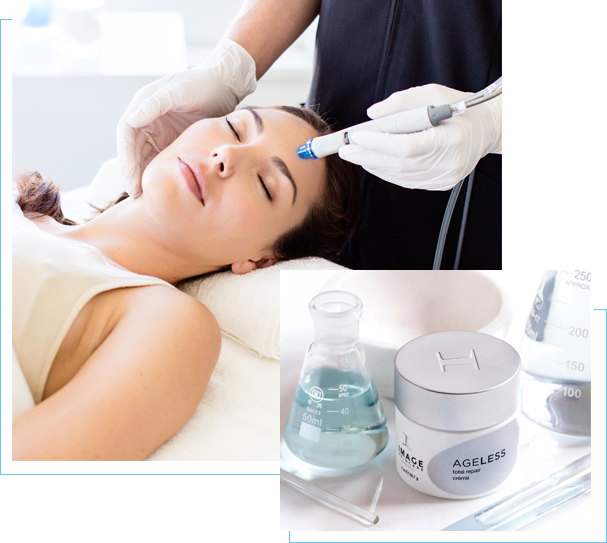Tanning Facts or Myths?
1. Tanning is ok if I don’t get burned.
Myth
Blistering sunburns are a well-known melanoma risk factor. Somehow, this has led to claims that tanning without burning is safe. But just like unicorns, “safe” tanning is a myth. Cumulative sun exposure, whether a burn develops or not, is also a melanoma risk factor, as well as a risk factor for non-melanoma skin cancers.
2. Tanning is a natural defense that will protect me from further burns.
Part Fact, mostly Myth
The base than hypothesis.
The first part of this is true. Tanning is a defensive response. The stimulus for tanning is mutation of your body’s DNA (similar to what happens after nuclear disasters, except that ultraviolet radiation doesn’t penetrate much beyond the skin). The response to DNA damage in the skin is an increase in pigment production. Since pigment helps to block ultraviolet rays, it does help limit further damage.
So getting a base tan sounds like a fantastic idea! Except that it doesn’t work. This was proven in a clever study where samples of normal human skin were grafted onto mice that were then given tans. If the base tan hypothesis is true, you would predict that after getting a tan, the skin grafts would be less susceptible to burning on later sun exposures. The exact opposite was found, and the reason is because it took the skin about 30 days to repair the damage from the first exposure. Additional exposures in that 30 day window just added to the damage that was already done. Having a base tan probably made the subsequent damage a bit less than it otherwise would have been, but the bottom line is that it really is more like adding insult to injury.
Really, you only become tan because the DNA in your skin has been damaged. Another way to look at is that how tan you are is a sign of how much genetic damage you have done to your skin.
3. Tanning beds are safer than the sun.
Myth
Tanning beds are designed to emit ultraviolet light and have been shown to be roughly equal, minute per minute, to sun exposure in the tropics. The World Health Organization classifies them as carcinogen delivery devices because they are machines built to deliver ultraviolet radiation, a known human carcinogen. They are specifically made to be more convenient than spending an afternoon outside by being engineered to deliver large doses of radiation in a shorter amount of time.
4. There’s no proof that tanning beds cause cancer.
Myth
The effects of tanning beds on melanoma rates have been shown in several studies:
- The risk goes up by 75% for anyone who has ever been to a tanning parlor.
- The risk goes up by 300% in “regular” tanners (50 hours, 100 sessions, or tanning over a ten year period).
- It does not matter what kind of tanning bed is used. The tanning industry created beds that mostly use ultraviolet A and promoted them as “safe” because lab scientists have a harder time causing cancer with this wavelength. But, in the real world outside the lab, the only “safe” tanning bed is imaginary because all of them have been shown to cause cancer.
Tanning bed usage also increases the rates of basal cell carcinoma by 150% and squamous cell carcinoma by 250%
5. The tanning bed industry is highly regulated to ensure safety.
Myth
A 2012 Congressional Study in which callers posing as fair-skinned teenage girls surveyed 300 tanning bed parlors (at least three in each state) and found:
- 90% of tanning salons denied the known risks of tanning. About half them said that it would not increase the risk of skin cancer in a fair-skinned teenager. Some said the link to skin cancer is just a rumor.
- 80% said that tanning improved health. Some of the claims where that it would prevent cancer, could treat depression and low self-esteem, cure arthritis, help weight loss, reduce cellulite, boost the immune system and treat lupus. None of these are true, some are clearly made up, and others are lies.
- Tanning salons ignore FDA recommendations. The Food and Drug Administration recommends no more than three visits in the first week, but 75% of tanning salons permit daily tanning.
6. Tanning beds are a safe way to get vitamin D.
Myth
This could be true if tanning beds weren’t carcinogen delivery devices.
7. Dermatologists use ultraviolet light treatments, so it must be safe.
Fact and Myth
The first part of this statement is true. Ultraviolet light treatment, or phototherapy, is used to treat some conditions. It is quite effective for psoriasis and for some patients with dermatitis.
However, some types of phototherapy have risks, particularly the older versions like broadband ultraviolet and ultraviolet A systems. Newer systems such as our narrowband UVB system have not been shown to increase skin cancer risk.



No Comments
Sorry, the comment form is closed at this time.